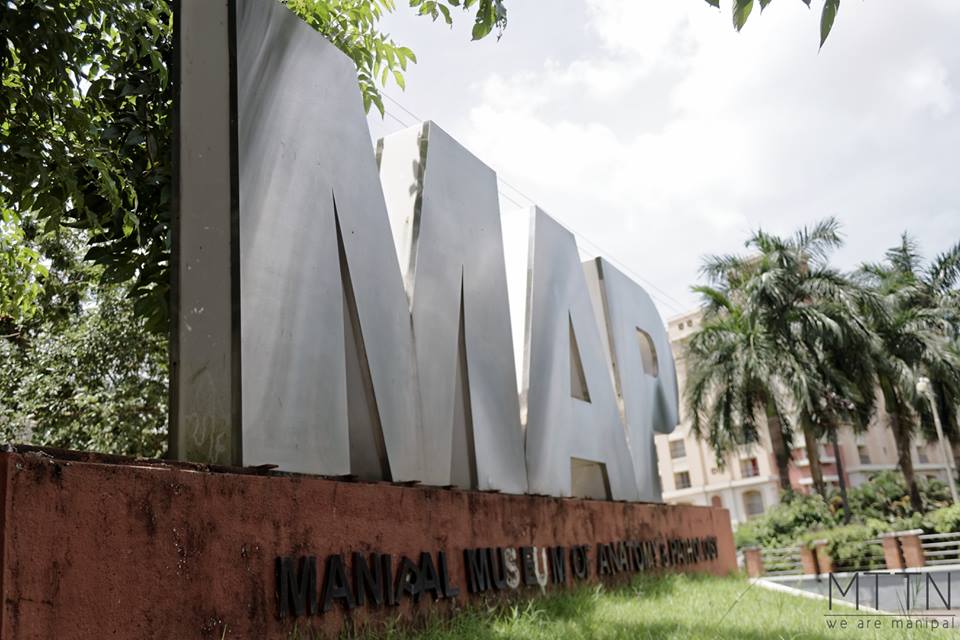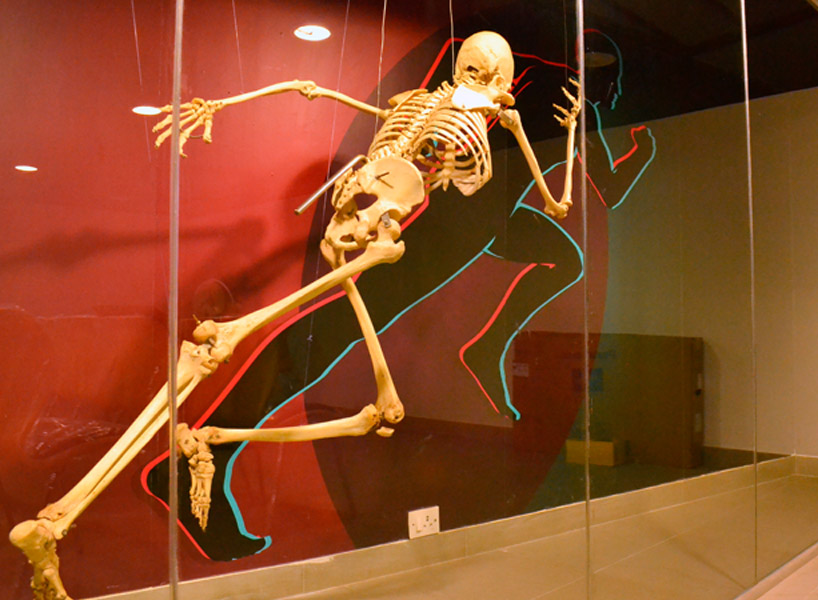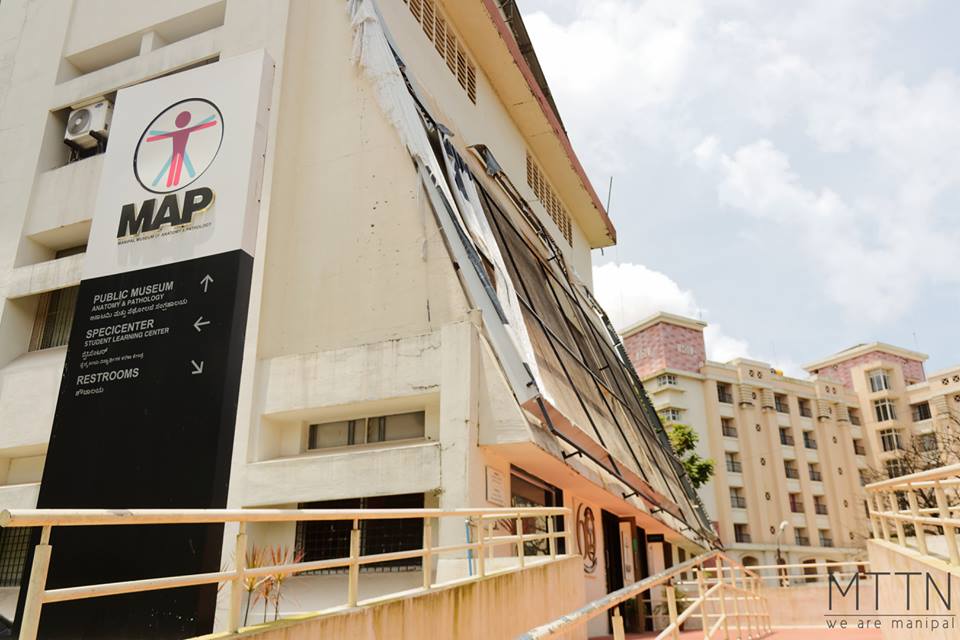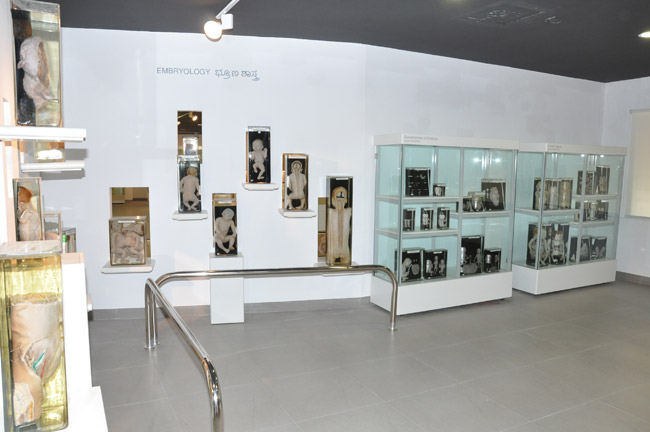
The Manipal Museum of Anatomy and Pathology had been a source of much personal curiosity for as long as I remember having set foot in Manipal ; and the numerous scurrilities I heard about it over time only served to fuel my desire to unveil the mysteries that lay within. So, I finally decided to pay the museum a long overdue visit. I don’t exactly know what I’d hoped to find in there, apart from what anyone could expect from any house of bottled-specimens.

The sign with the Vitruvian man and a large metallic abstract of jumbled spine, neurons and bone marked the entrance to what looked like a humble doorway with a skeletal horse by its front window, making it look all Lich-king’s-plague-themed for a museum.

The museum, founded back in 1956 and later refurbished in 2012, has this strange Smithsonian feel about it. Recognized as Asia’s largest anatomy museum, it houses over 1500 specimens of anatomy and pathology. As the name suggests, the 20,000 sq. feet museum is categorized into a pathology and an anatomy section that comprises of cross-sections, skeleton and model exhibits of various organisms, all well preserved.
This includes organisms like the cobra, Loris, fawns, calves and organisms with really cool names like ‘Draco Volaris’ or ‘Valanus’ among others.The most impressive exhibit is the skeleton of an 8-feet long king cobra among others.
The pathology part of the museum features comparative anatomy of various organs of the human body, identifying them as individual entities, sections concerned with development of the embryo and congenital anomalies. The ‘popular’, being sections on various infectious and lifestyle related diseases.
The Centre has minimal design that enables better observation, wall graphics and information panels highlighting each area and explaining each of the sections in simple words and high detail that facilitates better understanding, even from a layman’s point-of-view.
Undeniably, a great place for learning about our biological-selves, there’s a stigma that surrounds the place for not being an ideal destination for the faint-hearted.
Many of us even cringe at the thought of seeing dead animals or dissected organs in glass cases. Sure, the word ‘anatomy’ may naturally, bring some rather redolent memories to your minds or the term ‘pathology’ might wake the dormant germophobe in you, but it still is a good idea for you to visit the Centre in order alleviate these fears.
[Pro tip: For avoiding said, ‘cringe worthy experience’, avoid looking into the metal container that says, “Embalmed human body”. (Yep. that one’s definitely not for the faint-hearted!) ]

The museum is visited by hundreds of students and public on a daily basis, who pay a nominal fee for entry, while the faculty and the student population of the university can visit it for free, 08:00 am to 06:00 pm, everyday(except public holidays);but there still exists a large chunk of the student population, who haven’t explored this privilege that the university has to offer. Though this might not be your cup of tea, take a shot… in the name of science!

Leave a Reply
You must be logged in to post a comment.